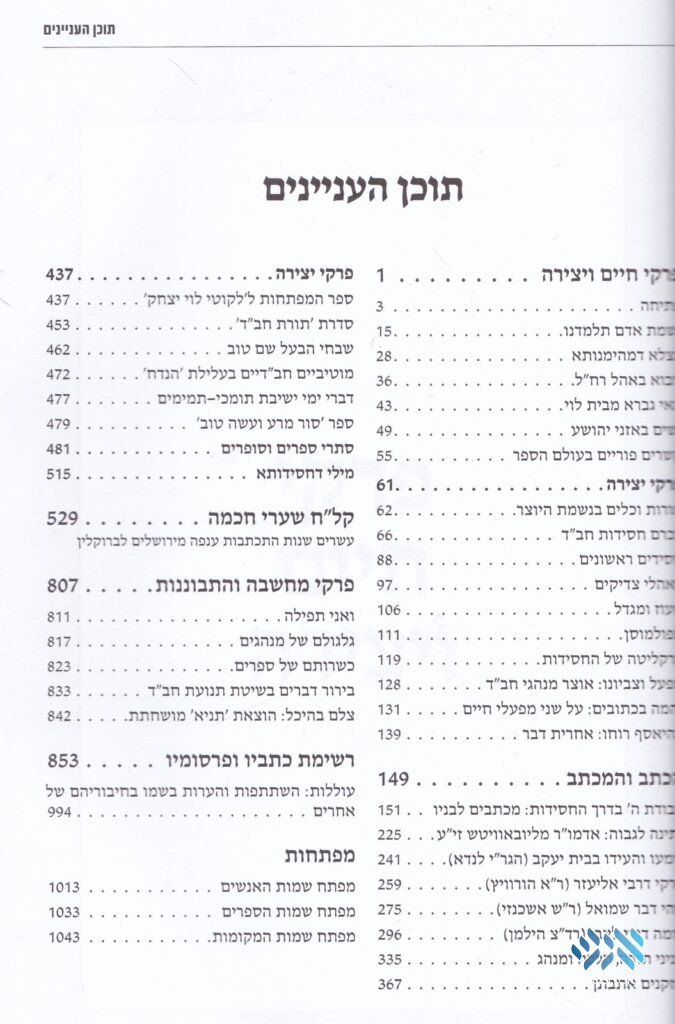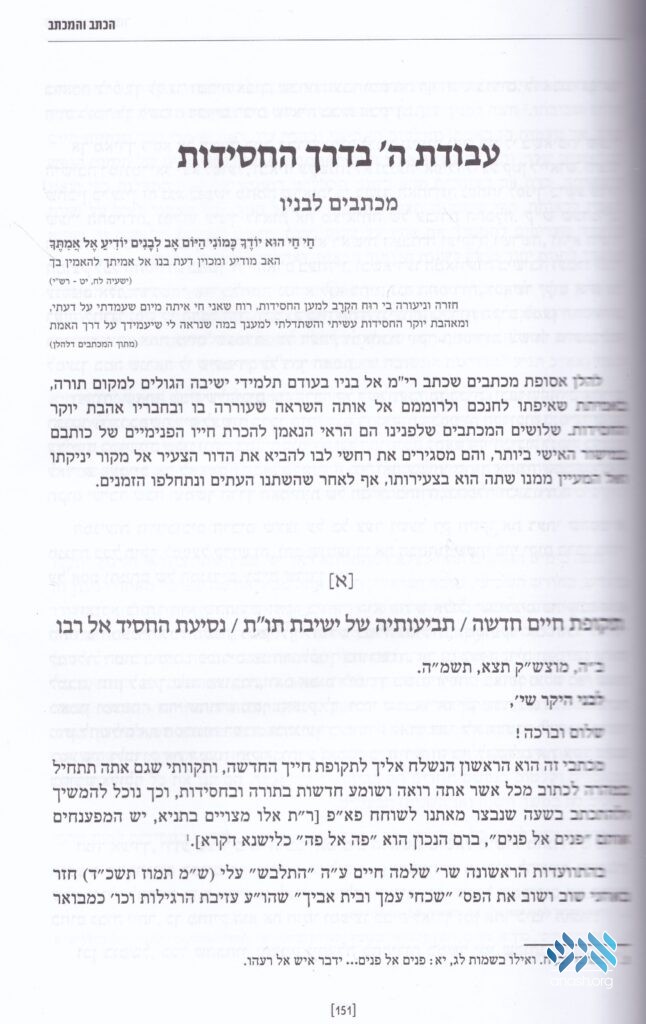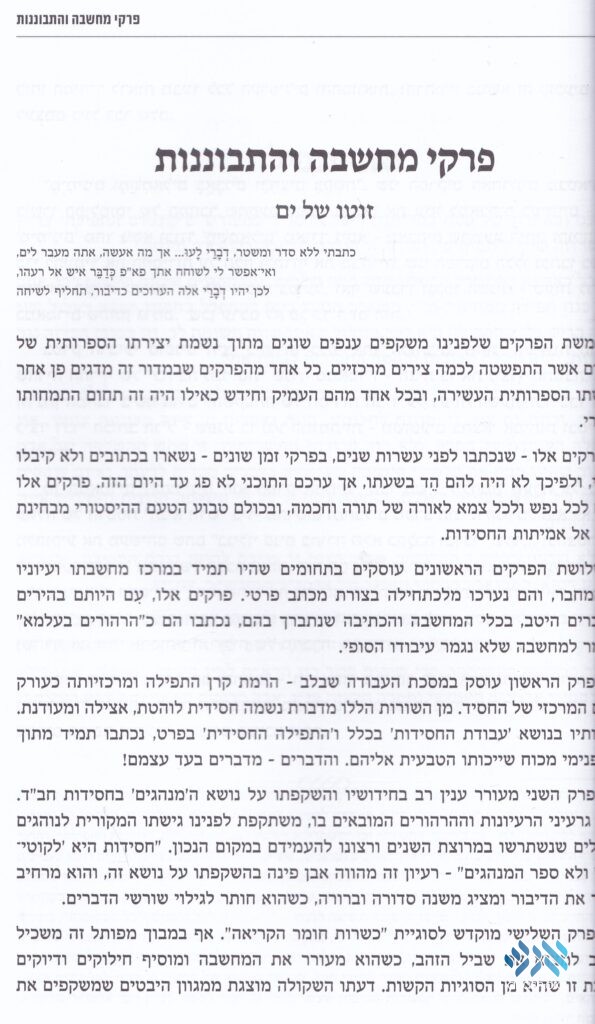A Look Inside the Book: The nearly 1,100 page ‘Sefer, Sofer, Vesipur’ was published to memorialize the famous chassidishe historian Rabbi Yehoshua Mondshine. But almost any type of chossid will find what to enjoy in the impressive work.
A Look Inside the Book is an Anash.org feature that takes a look at what’s new on the shelves of Seforim stores, and reviews recently printed seforim and books. The feature is presented in collaboration with SeforimDeals.com
By Shmuel Super
Sefer, Sofer, Vesipur: Sefer Zikaron
Yehoshua Mondshine and Menachem Mendel Kastel (ed.)
Machon Keramim
1047 pages
Sefer, Sofer, Vesipur is a memorial volume published in memory of the famous Chassidishe historian Rabbi Yehoshua Mondshine. As the title indicates, this book is comprised of three parts: Sefer, a bibliography of Mondshine’s extraordinary literary output; Sofer, selections from his private correspondence; and Sipur, the story of his life and achievements.
The three parts of the book are published in reverse order to the way they appear in the title, and we will review them in this order.
Sipur: Life Story
Yehoshua Mondshine was a complex and multifaceted individual. A person that knew him only from his publications might have developed the impression of a brilliant academic scholar, supremely confident, and combative. But a person that observed him in shul on Shabbos would see an old-school chassid who davened at length, and a humble unassuming person of refined character.
The Sipur section of this book is an attempt to understand the paradox of Yehoshua Mondshine, by tracing the different influences on his life, exploring the different sides to his personality, and revealing the motivating forces behind his life’s work.
This section opens with Rabbi Adin Even-Yisroel (Steinsaltz)’s solution to the riddle of Mondshine. R. Steinsaltz explains that Mondshine was a person driven by an uncompromising pursuit of truth. It was the same quest for truth that made him a committed Chassid, motivated his avodas hatefilah, drove his study of the history of Chassidus, and led him to zealously fight against anything he perceived as compromising this truth.
In flowery—and slightly cumbersome—style, the editor Menachem Mendel Kastel skillfully relates the story of Mondshine’s life and scholarship. We read how the 16-year-old Mondshine spent weeks in the Rambam library in Tel Aviv exploring different approaches to Yiddishkeit, eventually reaching the conclusion that Chassidus Chabad is the ultimate path of avodas Hashem. After transferring to Yeshivas Tomchei Temimim in Kfar Chabad he developed a deep personal relationship with the renowned mashpia Rabbi Shlomo Chaim Kesselman, who devotedly guided him along the path of Chassidus and sincere avodah.
The editor proceeds to outline Mondshine’s life’s work, surveying the different areas to which he devoted over 40 years of writing, presenting the background behind his different publications and explaining the impact they had. We also learn of two life projects to which Mondshine devoted decades of work but didn’t merit to complete due to his untimely passing: a new scholarly edition of Beis Rebbe, the classic work of early Chabad history, and a monumental encyclopedia of Chabad Rabbonim. The author was unable to complete these works, but we are told that the family will endeavor to eventually complete and publish them through the Machon Keramim institute they have founded for this purpose.
Sofer: Correspondence
The bulk of this book, over 700 pages, is devoted to Mondshine’s private correspondence. This section is divided into chapters arranged by people or topics.
The range of people Mondshine corresponded with is as astonishing as the breadth of the spectrum of topics addressed. Correspondents include Rabbonim, talmidei chachamim of all stripes, ziknei hachassidim, historians, bibliographers, authors, and ordinary individuals. The range of topics addressed include halachah and minhagim, avodas Hashem, dikduk, bibliography, general Jewish history, Chabad history, and more.
In the chapter of correspondence with his sons learning in Yeshivah we see Mondshine as a father and educator, giving guidance in learning nigleh and chassidus, extolling the virtues of iskafya and avodas hatefilah, and decrying the vices of chitzoniyus and time-wasting. The letters are sprinkled with stories, anecdotes, vertelach, and hadrachah from R. Shlomo Chaim and other masphi’im. A separate chapter of letters about Chassidus and avodas Hashem also expresses this aspect of his personality. One noteworthy letter addresses the balance between emunah and yedias Hashem in Chassidus Chabad in response to the questions of a young bachur learning in a non-Chabad Yeshivah—now known as Rabbi Yosef Braun, Rav of Crown Heights.
The chapters of correspondence with Rabbis Yaakov Landa and other ziknei hachassidim show Mondshine as a scholar of Chabad history, and the correspondence with Reb Dovid Tzvi Hilman and Reb Shmuel Ashkenazi express his interests in bibliography, minhagim, and general Jewish history.
The largest chapter in this section is devoted to correspondence with Chaim Lieberman, the librarian and secretary of the Friediker Rebbe. In the 138 letters published here, the two librarians and bibliophiles exchange documents and manuscripts, discuss their respective publications, and clarify matters of historical interest. This correspondence gives us a glimpse into the mind and character of Lieberman, an enigmatic person who lived a hermit-like life revolving around books and bibliography.
In these letters Mondshine repeatedly implores Lieberman to write his memories of the Rebbeim and the Chassidim he knew, without much success. In one peculiar exchange, Lieberman seemingly taunts Mondshine by responding to his entreaties and sharing some stories from a private notebook he just burned that week… Horrified, Mondshine begs him to stop burning his important historical information (p. 678-681). Nevertheless, Lieberman does share some memories from his youth in Pleshnitz (p. 778), Liozna (p. 631, 663), and the Rebbe Rashab and the Friediker Rebbe (e.g., pp. 742-744). In a few letters Lieberman also divulges some details from his regular lengthy yechidusen with the Rebbe (e.g., pp. 779-780).
This section concludes with five previously unpublished essays written by Mondshine. The first three essays address avodas hatefilah, the development of minhagim, and the definition of kosher literature. Originally written as private letters, Mondshine is less decisive than usual in these essays, expressing his nuanced ideas and thoughts about these topics. The final two essays published here are polemic in nature.
Sefer: Bibliography
The final section of the book is a bibliography of Mondshine’s publications. Rather than just present a dry list, the editor provides a concise description of the contents of each entry as well as information about the background and reception of the piece, where relevant. The 847 (!) entries on this comprehensive list include dozens of books Mondshine wrote and edited; hundreds of articles published in academic journals, frum periodicals, kovtzei he’ores, and newspapers; responses to articles published in various journals and newspapers; and even online articles and blog posts.
Following the bibliography is a separate list titled Olelos, which contains 115 entries about comments from Mondshine and acknowledgments of assistance from him included in books and articles published by other authors.
Conclusion
This book is more than six years in the making. In a publication issued for the shloshim after Mondshine’s passing the family announced the plans for this memorial volume, scheduled to appear for the first yartzeit. The wait has been long, but the result is well worth it.
The work of the editor, Menachem Mendel Kastel, is deserving of special praise. His hundreds of footnotes clarify hints and allusions, reference additional sources, and add learned discussion. Kastel is even able to correct the odd mistake made by the author, based on additional information he uncovered or a deeper analysis (e.g., p. 269, fn. 4; and p. 283, fn. 31). Hopefully, he will continue to edit and publish many more works from the extensive Mondshine archives.
The book is beautifully produced, aesthetically designed, and clean of typos and errors. This hefty tome could well have been divided into a set of three books, but this convenience would also have driven up the cost significantly. Pictures and color scans of documents and manuscripts are liberally sprinkled throughout the book. The indexes for names of people, books, and places and names of people make this work useful as a reference tool as well.
The correspondence published in the book is a relatively light read and can be read letter by letter, and the size and wide range of topics guarantees that every reader will find much fascinating information to enjoy from this extraordinary treasure trove.
Sefer, Sofer, Vesipur can be purchased here.





I’m glad to see I wasn’t the only one who felt this.
But that was my only grievance, the book itself was a wholly fascinating read, and a true treasure trove.
I hope in the near future, a translated to English version will be available. B”H